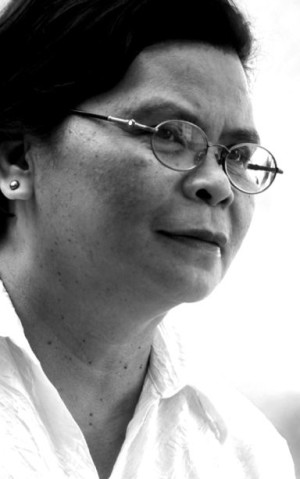
DELACERNA
The first Casa Gorordo Museum Talk last January 16 which featured “Sinug and Sinulog: Exploring the Two Dance forms” is the first of a series of forums and lectures organized by the Casa Gorordo Museum to enhance public awareness and appreciation.
It was also the first of the Heritage for Media activity for the year. Spearheaded by the Culture and Heritage Program of RAFI, the lecture and demo had two leading Cebuano dance researchers as resource persons, Prof. Caesar Nimor and Mrs. Mila Catelo-Janson, who delved into the differences in dance choreographies, history, narratives, symbols and meanings.
The Turang Dance Company was also there to demonstrate the sinug led by Carol Diola, niece of the late Nang Titang.
Prof. Nimor discussed and demonstrated the versions of the Cebuano Ritual Dance by starting with the coat of arms to the Sinulog logo.
The Sinulog logo was originally from the coat of arms of the House of Hapsburg which was the dominant power at the time of the Spaniards’ coming.
The logo has the kalasag which means a shield (the natives’ resistance to colonialism) and the two are integrated in the Sinulog logo.
Most dances in the Philippines are rituals and the sinug (originally sinu’og) is an ancient ritual. It is a survivor of indigenous dance ritual despite more than three hundred years of colonization. With the sinug, there is a shift from ritual, from the diwata to Santo Niño.
Prof. Nimor shared the three stories on the origin of the sinug.
The first story is that it has an ancient indigenous origin as strongly evidenced by the inhabitants of the Visayas. The forward-backward steps are ancient and indigenous in origin. The second story is the 1521 baptism and this is called the dance of Hara Juana. This is why there is always a festival queen.
The third story is the Baladhay story (between 1521 – 1565). Baladhay was Humabon’s adviser who fell very ill and was confined in a room where the image of the Santo Niño was placed. One day, Humabon’s household was surprised to hear shouting and dancing from the room of Baladhay. Baladhay was dancing and shouting while being tickled with a coconut midrib by the Santo Niño.
There are two versions of the indigenous sinug: sinug sa tindera’g kandila which is called votive sinug and is considered the most indigenous and the combative sinug performed by the Mabolo group of the late Nang Titang Diola.
The contemporary version of sinug is the Sinulog which is highly theatrical with focus on the kinampilan, the forward-backward movement.
There are four traditional gestures of the votive version: Pag-isa sa kamot (raising the hand) in reverse T position as a gesture of praying; the wrist movement for halad or offering; Hapay is a waving gesture of arms on fifth position; and the Pangurus (making the sign of the cross) to open and close to honor the Blessed Trinity. The tindera’g kandila does the pangurus before and after sinug.
As dance ritual there is always chanting and in sinug the chanting is the sangpit sa Senyor, in short Pit Senyor. Prof. Nimor strongly reminded the audience that in sinug the image of Santo Niño is not to be hoisted but placed on an altar or table in front.
He demonstrated how to dance the sinug with the image — cuddle the image with the left arm like cuddling a baby or sapopo in Cebuano while waving the right hand.
The Turang Dance Company performed the sinug, the combative sinug which is more like the moro-moro or the commedia. Mrs. Mila Catelo-Janson provided us with the step notations of the Sinu’og sa Mabolo; all of the steps with 4 / 4 time except when the shield and sword are placed on the dance floor which has a 3 / 4 time.
The steps are, the paso which is the entrance, repaso, then the natural, the tukod espada, the fighting scene between the Moros and Kristiano, the kinampilan where they shout “Pit Senyor” and serves as the highlight of the dance and is danced faster.
There is a transition step used to change from one dance step to another as the drum beat changes. Interestingly, the Casa Gorordo has continued the tradition of holding the Sinug sa Casa Gorordo the day after the Sinulog Mardi Gras with the Mabolo Group performing.
Kudos to the Casa Gorordo Museum for initiating the series with a lecture demo on a tradition which is closest to the heart and soul of every Cebuano. Thanks to Prof. Caesar Nimor and Mrs. Mila Catelo-Janson for their dedication to dance research.
I have known Caesar Nimo way back the 1980’s where I often invited him to be a resource person during the yearly Asian Festival, a one week culminating activity of my Asian History Classes at UP Cebu High School where he would bring his dancers to demonstrate.
The most memorable lecture demo of Caesar Nimor at the Asian Festival was his demo on the 56 uses of the Malong.
Prof. Caesar Nimor is a retired professor of the University of Cebu and forerunner of the University’s MAPEH teachers’ education and founder and adviser of its Cebu Biokinetics Society composed of student-teachers who specialize in folk dancing.
Disclaimer: The comments uploaded on this site do not necessarily represent or reflect the views of management and owner of Cebudailynews. We reserve the right to exclude comments that we deem to be inconsistent with our editorial standards.
